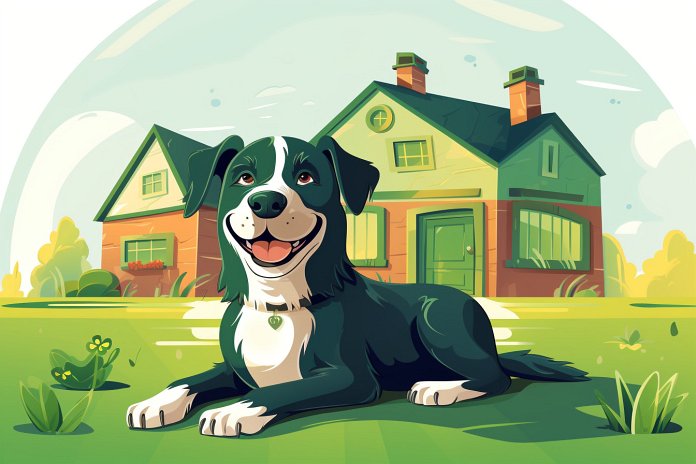
In a perfect world, every dog would have a home and every home would have a dog. But what if you find yourself in a situation where you’re considering sharing a dog between two separate homes? For example, if you’re going through a divorce but both you and your partner want to maintain a strong relationship with your dog.
There’s no hard and fast rule on whether dogs should or shouldn’t have more than one home. It really depends on the individual dog. Some dogs can cope well with split living arrangements, while others, especially young puppies, may be better off in a single household.
Signs Your Dog Isn’t Coping with Two Different Homes
Determining whether your dog can handle sharing their time between two homes can be difficult. It may be worth trying it out for a trial period and closely monitoring your dog for signs of stress or unhappiness.
Signs of unhappiness can vary, with some dogs acting out by being destructive, while others become lethargic and depressed. It’s important to be familiar with what is normal behavior for your dog in order to detect any warning signs early.
Body Language
Watch your dog’s body language for signs that they’re not coping with the dual-living arrangement. This can include shaking, weakness, low tail carriage, lack of focus, and dropped ears.
Other Signs
Other signs to look for include behavioral changes, moodiness and depression, lethargy, and destructive behavior.
The Science Behind Dogs Needing Stability
Some dogs handle change well and have a steady temperament, making them suitable for sharing arrangements. However, if your dog needs stability, gets anxious with change, or has a stronger attachment to one owner, sharing homes may not be practical.
In these situations, it’s important to prioritize your dog’s needs over your own. Consider your reasons for wanting a sharing arrangement and do what’s best for your dog.
Helping Your Dog Adapt to Their New Living Arrangements
If you decide to try dog-sharing, make an effort to ensure a smooth transition between homes. Establish key rules and guidelines with the other owner, provide a consistent routine, and discuss important aspects such as custody, handovers, feeding, exercise, vet bills, parasite prevention, training methods, and diet consistency.
In cases of divorce or relationship breakdown, one person will now have to take on all the responsibilities that were previously shared. Finding time to provide care, love, and daily interaction for your dog may become more challenging.
Despite the potential challenges, it is possible to successfully share a dog between two homes. As dogs play increasingly important roles in our lives, sharing arrangements may become more common, with dog owners willing to do whatever it takes to maintain a strong bond with their pets.
“Putting your dog’s needs first in a shared living arrangement”

Tips & Things to Know
1️⃣ Pay attention to your dog’s behavior and body language: It’s important to closely monitor your dog for any signs of stress or unhappiness when sharing them between two homes. Look out for behavioral changes, moodiness, lethargy, destructive behavior, and other signs of discomfort.
2️⃣ Consider your dog’s temperament and adaptability: Some dogs may cope well with split living arrangements, while others, particularly young puppies or dogs with attachment issues, may struggle to adjust. Put your dog’s needs above all else and consider if the arrangement is truly in their best interest.
3️⃣ Establish clear rules and routines: Sit down with the other owner and establish key guidelines for the dog-sharing arrangement. Consistency is crucial for your dog’s well-being, so discuss matters such as custody schedules, handovers, feeding, exercise, vet care, training methods, and parasite prevention. Having a routine and clear communication can help make the transition between homes smoother for your dog.
Frequently Asked Questions, Answered ✅
1. Should dogs be shared between two separate homes?
– There is no definitive answer as it depends on the individual dog. Some dogs will cope well with split living arrangements, while others may need the stability of a single household.
2. What are some signs that a dog isn’t coping with two different homes?
– Signs of stress or unhappiness can vary, but common signs include destructive behavior, lethargy, moodiness, and changes in appetite or activity levels.
3. How can you determine if your dog is struggling with unconventional living arrangements?
– By closely monitoring your dog’s behavior and looking for signs of stress or unhappiness, as well as considering any underlying health problems.
4. What are some body language cues that indicate a dog is not coping with dual-living arrangements?
– Shaking, weakness, low tail carriage, lack of focus, and dropped ears are some body language cues that may indicate a dog’s struggle with the situation.
5. How can dog owners help their pets adapt to sharing arrangements?
– Establishing key rules and guidelines, maintaining a consistent routine across both homes, and discussing important aspects such as handovers, feeding, exercise, vet care, and training methods.